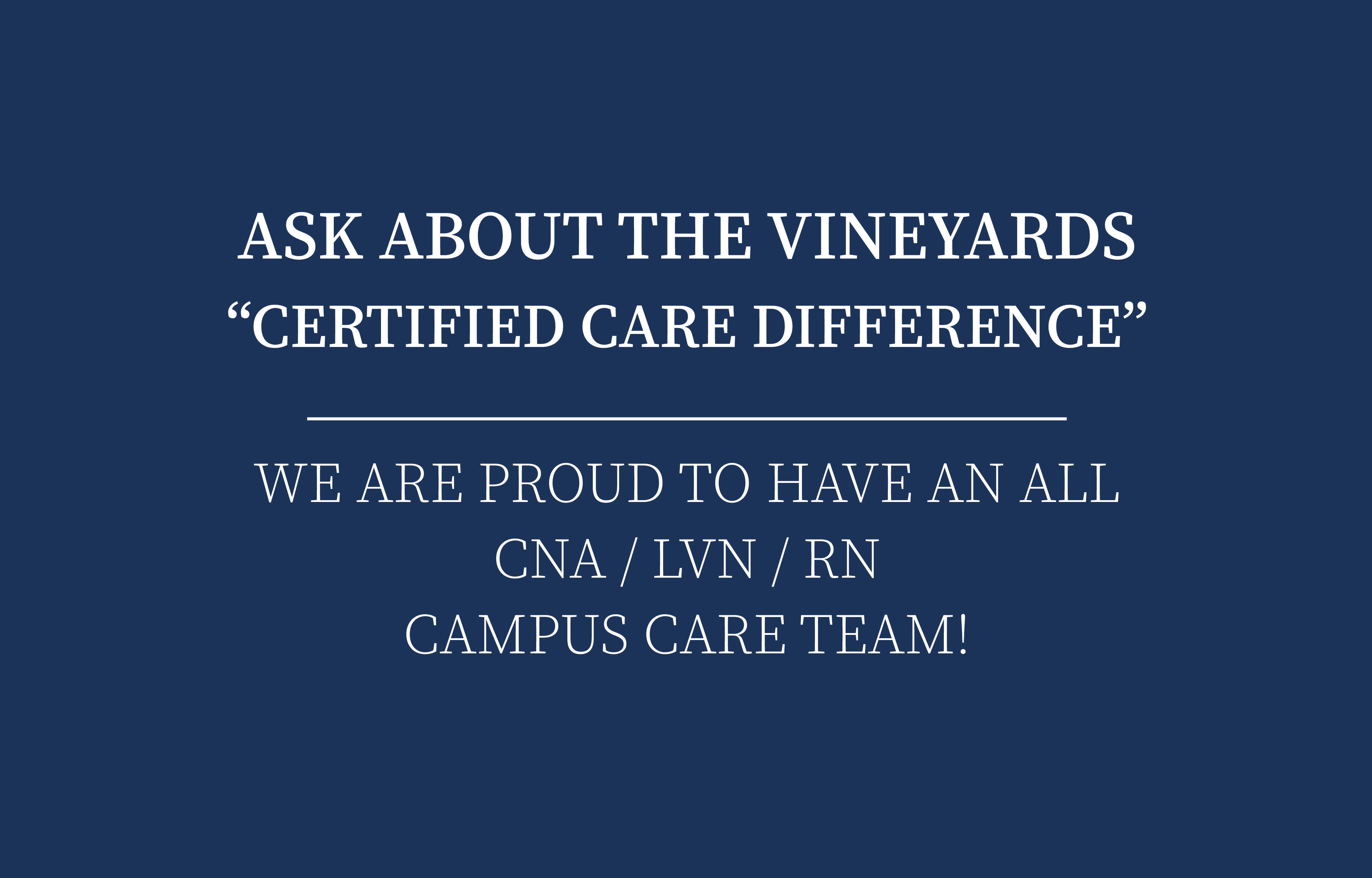Blog
Home Blog
Blogs
Age-Related Macular Degeneration
As we age, maintaining our vision becomes a higher priority. Age-related macular degeneration, or AMD is the leading cause of vision loss among seniors. While there’s no cure for the disease, there are simple things you can do to help prevent or slow the progression of the disease.
Step 1: Stop smoking
Probably the number one way to prevent AMD is to stop smoking or not smoke in the first place. Consider findings from these studies. If you are a smoker, stop now. Smoking is a major risk factor for developing macular degeneration.
- Smokers are up to four times more likely than non-smokers to have macular degeneration, public health experts at the University of Manchester said in a British Medical Journal report. In Great Britain, an estimated 53,900 people older than 69 have AMD attributed to smoking. Of that number, 17,900 are legally blind.
- Another study from the Massachusetts Eye and Ear Infirmary showed that current and past smokers had a 1.9- and 1.7-fold greater risk, respectively, of AMD compared with non-smokers.
Step 2: Eat plenty of greens
Eating plenty of dark, leafy greens may help with macular degeneration prevention. A study published by researchers at the Massachusetts Eye and Ear Infirmary reported that people who consumed the most vegetables rich in carotenoids (lutein and zeaxanthin) had a 43 percent lower risk of AMD than those who ate these foods the least. Carotenoid-rich vegetables include dark, leafy greens, especially raw spinach, kale and collard greens.
“In particular, a higher frequency of intake of spinach or collard greens was associated with a substantially lower risk for AMD,” the researchers said.
The authors concluded that “consumption of foods rich in certain carotenoids, in particular dark green, leafy vegetables, may decrease the risk of developing advanced or exudative (‘wet’) AMD, the most visually disabling form of macular degeneration among older people.”
Step 3: Take a daily multivitamin supplement
Taking vitamins and minerals from a trusted source may be a good idea for many reasons, including general eye health. Particularly for an older person, it may be difficult to obtain all the nutrients you need from diet alone. Ask your doctor for advice about which supplements might work best for you based on your specific health needs.
Step 4: Consider an AREDS nutritional supplement
Two large clinical trials sponsored by the National Eye Institute (NEI) have suggested certain nutritional supplements can slow the progression of AMD among people with early and intermediate stages of macular degeneration.
AREDS1. The antioxidant vitamin formula used in the first AREDS study contained the following ingredients:
- vitamin C – 500 mg
- vitamin E – 400 IU
- beta-carotene – 15 mg
- zinc – 80 mg (as zinc oxide)
- copper – 2 mg (as cupric oxide)
The results of AREDS1, published in 2001, revealed patients at high risk of progressive AMD who took the daily antioxidant and zinc supplement had up to a 25 percent reduced risk of their macular degeneration progressing to an advanced stage (depending on the degree of AMD present at the start of the trial), compared to matched participants who took a daily placebo pill.
Popular AREDS-formula eye vitamins include I-Caps (Alcon), Ocuvite PreserVision (Bausch + Lomb) and MacularProtect Complete (ScienceBased Health). Variations of these products and eye vitamins from other manufacturers also may contain lutein and zeaxanthin and/or omega-3 fatty acids.
Step 5: Eat more fish
Research also has shown the benefits of eating fish for macular degeneration prevention: Some studies show that eating fish regularly can help prevent macular degeneration.
- A study at the Massachusetts Eye and Ear Infirmary showed that senior men with the highest levels of fish consumption (more than two servings weekly) were 45 percent less likely to have AMD than those who ate the least amount of fish (less than one serving per week).
- Brian Chua and researchers at the University of Sydney demonstrated similar findings. They evaluated 2,900 people aged 49 or older. Participants who ate fish at least once a week were 40 percent less likely to have beginning-stage AMD develop than those who reported eating fish less than once a month or not at all. Those who ate fish at least three times weekly were less likely to have late-stage AMD.
Step 6: Exercise regularly and maintain a healthy weight
Regular exercise reduces macular degeneration risk, according to a study in the British Journal of Ophthalmology. In this study, 4,000 people ages 43 to 86 were monitored for 15 years. After considering other risk factors such as weight, cholesterol levels and age, researchers found that people who led an active lifestyle were 70 percent less likely to have AMD develop during the follow-up period. To be included in the active group, participants must have walked at least two miles a day, three times weekly, or the equivalent.
Step 7: Eat fruits and nuts daily
Eating fruits and nuts can help reduce your risk of macular degeneration:
- A 2004 study at Harvard Medical School showed that participants who ate three or more servings of fruit daily had a substantially lower risk of “wet” or advanced AMD.
- Another study from the Massachusetts Eye and Ear Infirmary demonstrated that eating nuts helped deter progression of early or intermediate AMD to more advanced stages.
Step 8: Reduce refined carbs in your diet
Diets high in refined carbohydrates increase the risk of AMD, which was confirmed in a study published in the American Journal of Clinical Nutrition. Highly refined foods have a high glycemic index, causing a rapid increase in blood sugar and insulin release. Examples of refined carbohydrates include white bread, white rolls, baked white potatoes, donuts and pretzels. Low glycemic index foods include most fruits, brown rice, multi-grain and whole grain breads, apple juice and carrot juice.
Be careful, though, when considering the glycemic index of foods. The glycemic index (GI) was developed in 1981 by researchers at the University of Toronto. It is a value from 1 to 100 that indicates a food’s effect on a person’s blood sugar level, with a value of 100 being equivalent to the change caused by the same amount of pure glucose. A food with a high glycemic index increased blood sugar level more severely than foods with lower GI values.
Step 9: Control your blood pressure and cholesterol
Some evidence indicates that controlling cholesterol can protect you from macular degeneration. Cholesterol is a fatty substance that can build up in blood vessels, inhibiting blood flow necessary for maintaining health of eye tissue.
Also, blood pressure control may be important for macular degeneration prevention. Major investigations including the Framingham Heart and Eye Studies and Beaver Dam Eye Study indicate a significant link between high blood pressure and development of advanced, potentially blinding forms of macular degeneration.
Step 10: Wear sunglasses with UV and blue light protection
Major studies show no conclusive evidence that overexposure to the sun directly causes macular degeneration. But some findings suggest at least an association between AMD and cumulative eye damage from overexposure to both UV and high energy visible (HEV) or “blue” light.
As an example, a recent major study found that people who consumed too few antioxidants, in combination with overexposure to blue light, were four times more likely to develop advanced or “wet” AMD. For this reason, it is a good idea to wear sunglasses that protect against both UV and HEV light outdoors.
Step 11: Have regular eye exams
Last but not least, have regular eye exams. The American Academy of Ophthalmology recommends a dilated eye exam at least every two to three years if you’re between 45 and 60 and every year after the age of 60. By following these steps, you’ll know you’ve done everything you can to prevent AMD. But if you’re strongly genetically predisposed to develop macular degeneration, it still may develop and worsen.
Regular eye exams can help your eye doctor detect AMD and monitor it so that you can receive proper AMD treatment, if appropriate, beyond these preventive measures.
Managing Heat Stoke
Too much heat is not safe for anyone. It is even riskier if you are older or have health problems. It is important to get relief from the heat quickly. If not, you might begin to feel confused or faint. Your heart could become stressed and stop beating. Being hot for too long can be a problem. It can cause several illnesses, all grouped under the name hyperthermia. 
- Heat syncope is a sudden dizziness that can happen when you are active in hot weather. If you take a heart medication called a beta blocker or are not used to hot weather, you are even more likely to feel faint. Rest in a cool place, put your legs up, and drink water to make the dizzy feeling go away.
- Heat cramps are the painful tightening of muscles in your stomach, arms, or legs. Cramps can result from hard work or exercise. Though your body temperature and pulse usually stay normal during heat cramps, your skin may feel moist and cool. Find a way to cool your body down. Rest in the shade or in a cool building. Drink plenty of fluids, but not those with alcohol or caffeine.
- Heat edema is a swelling in your ankles and feet when you get hot. Put your legs up to help reduce swelling. If that doesn’t work fairly quickly, check with your doctor.
- Heat exhaustion is a warning that your body can no longer keep itself cool. You might feel thirsty, dizzy, weak, uncoordinated, and nauseated. You may sweat a lot. Your body temperature may stay normal, but your skin may feel cold and clammy. Some people with heat exhaustion have a rapid pulse. Rest in a cool place and get plenty of fluids. If you don’t feel better soon, get medical care. Be careful—heat exhaustion can progress to heat stroke.
Heat Stroke—A Medical Emergency
If you have heat stroke, you need to get medical help right away. Older people living in homes or apartments without air conditioning or fans are at most risk. People who become dehydrated or those with chronic diseases or alcoholism are also at most risk. Signs of heat stroke are:
- Fainting (possibly the first sign) or becoming unconscious
- A change in behavior—confusion, agitation, staggering, being grouchy, or acting strangely
- Body temperature over 104°F (40°C)
- Dry, flushed skin and a strong, rapid pulse or a slow, weak pulse
- Not sweating even if it is hot
Who Is at Risk?
Each year, most people who die from hyperthermia are over 50 years old. Health problems that put you at greater risk include:
- Heart or blood vessel problems
- Poorly working sweat glands or changes in your skin caused by normal aging
- Heart, lung, or kidney disease, as well as any illness that makes you feel weak all over or results in a fever
- Conditions treated bHeay drugs, such as diuretics, sedatives, tranquilizers, and some heart and high blood pressure medicines; they may make it harder for your body to cool itself
- Taking several prescription drugs; ask your doctor if any of your medications make you more likely to become overheated.
- Being very overweight or underweight
- Drinking alcoholic beverages
How Can I Lower My Risk?
Things you can do to lower your risk of heat-related illness:
- Drink plenty of liquids, such as water or fruit or vegetable juices. Stay away from drinks containing alcohol or caffeine. If your doctor has told you to limit your liquids, ask what you should do when it is very hot.
- If you live in a home or apartment without fans or air conditioning, try to keep your house as cool as possible. Limit your use of the oven. Keep your shades, blinds, or curtains closed during the hottest part of the day. Open your windows at night.
- If your house is hot, try to spend time during mid-day some place that has air conditioning—for example, go to the shopping mall, movies, library, senior center, or a friend’s house.
- If you need help getting to a cool place, ask a friend or relative. Some religious groups, senior centers, and Area Agencies on Aging provide this service. If necessary, take a taxi or call for senior transportation. Don’t stand outside in the heat waiting for a bus.
- Dress for the weather. Some people find natural fabrics, such as cotton, to be cooler than synthetic fibers.
- Don’t try to exercise or do a lot of activities outdoors when it’s hot.
- Avoid crowded places when it’s hot outside. Plan trips during non-rush-hour times.
What Should I Remember?
Older people can have a tough time dealing with heat and humidity. The temperature inside or outside does not have to reach 100°F (38°C) to put them at risk for a heat-related illness.
Headache, confusion, dizziness, or nausea could be a sign of a heat-related illness. Go to the doctor or an emergency room to find out if you need treatment.
To keep heat-related illnesses from becoming a dangerous heat stroke, remember to:
- Get out of the sun and into a cool place—air-conditioning is best.
- Drink fluids, but avoid alcohol and caffeine. Water and fruit or vegetable juices are good choices.
- Shower, bathe, or sponge off with cool water.
- Lie down and rest in a cool place.
- Visit your doctor or go to an emergency room if you don’t cool down quickly






